U.S. Economic Indicators
Throughout this site there are many discussions of economic indicators. This post is the latest in a series of posts indicating U.S. economic weakness or a notably low growth rate.
The level and trend of economic growth is especially notable at this time. As seen in various measures and near-term projections, the U.S. economy has undergone an outsized level of economic contraction. However, most people believe (and virtually all prominent economic forecasts indicate) that this historic level of contraction will be temporary in nature and that a sustainable economic rebound will have started in the third quarter of 2020.
As seen in the December 2020 Wall Street Journal Economic Forecast Survey the consensus (average estimate) among various economists is for -2.74% GDP growth in 2020, 3.69% GDP growth in 2021, and 2.93% GDP growth in 2022.
Charts Indicating U.S. Economic Weakness
Below are a small sampling of charts that depict weak growth or contraction, and a brief comment for each:
The Weekly Economic Index (WEI)
A recently-introduced indicator, the Weekly Economic Index, is an economic indicator that is a composite of 10 different weekly indicators. It is (purportedly) designed to provide a timely depiction of the U.S. economic trend. As seen below, it depicts the severity of the recent plunge in economic activity and subsequent (partial) rebound.
The Weekly Economic Index (WEI) with a value of -1.76, updated as of January 7, 2021 (incorporating data through January 2, 2021):
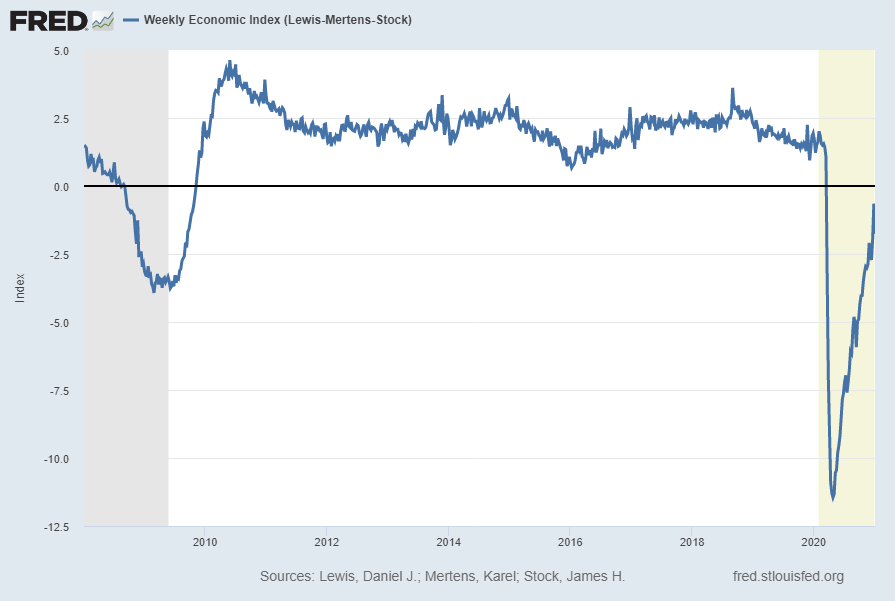
source: Lewis, Daniel J., Mertens, Karel and Stock, James H., Weekly Economic Index (Lewis-Mertens-Stock) [WEI], retrieved from FRED, Federal Reserve Bank of St. Louis; accessed January 12, 2021: https://fred.stlouisfed.org/series/WEI
__
Truck Tonnage (TRUCKD11)
“Truck Tonnage” (TRUCKD11), like other transportation measures, is exhibiting recent weakness. Shown below is this measure with last value of 109.7 through October, last updated December 16, 2020:
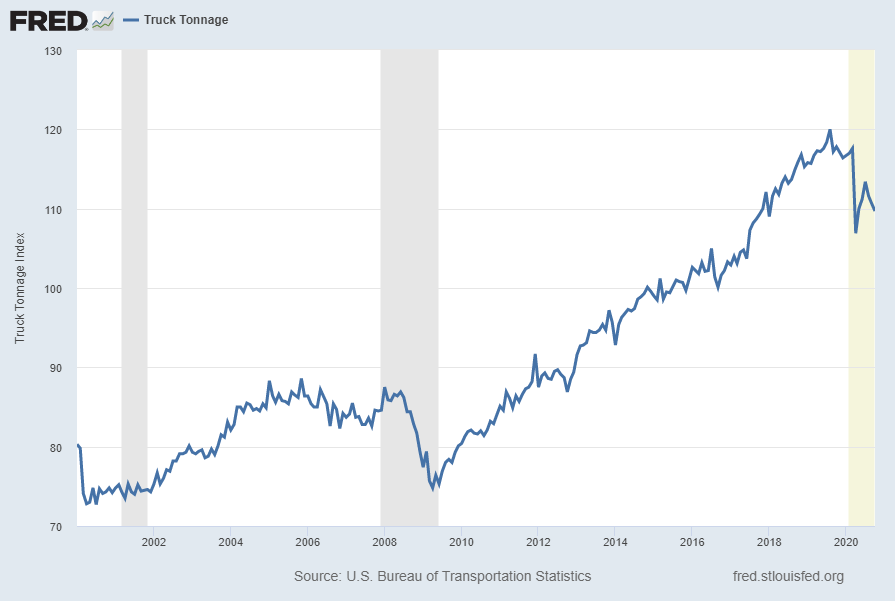
Below is this measure displayed on a “Percent Change From Year Ago” basis with value -6.9%:
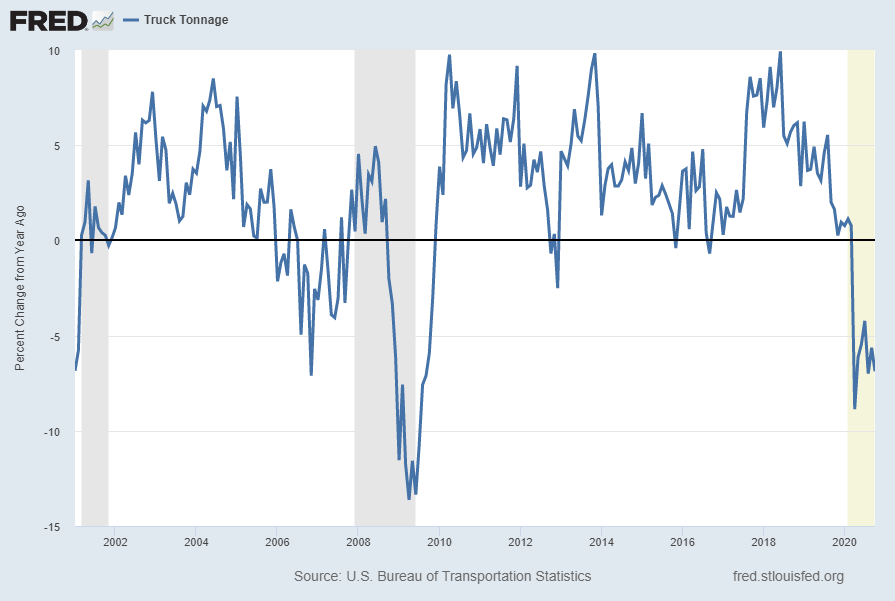
source: U.S. Bureau of Transportation Statistics, Truck Tonnage [TRUCKD11], retrieved from FRED, Federal Reserve Bank of St. Louis; accessed January 11, 2021: https://fred.stlouisfed.org/series/TRUCKD11
__
Vehicle Miles Traveled (TRFVOLUSM227SFWA)
An indication of transportation and mobility is the Vehicle Miles Traveled indicator.
Shown below is this measure (seasonally adjusted (SA)) with last value of 246,794 (Millions of Miles) through October, last updated December 21, 2020:
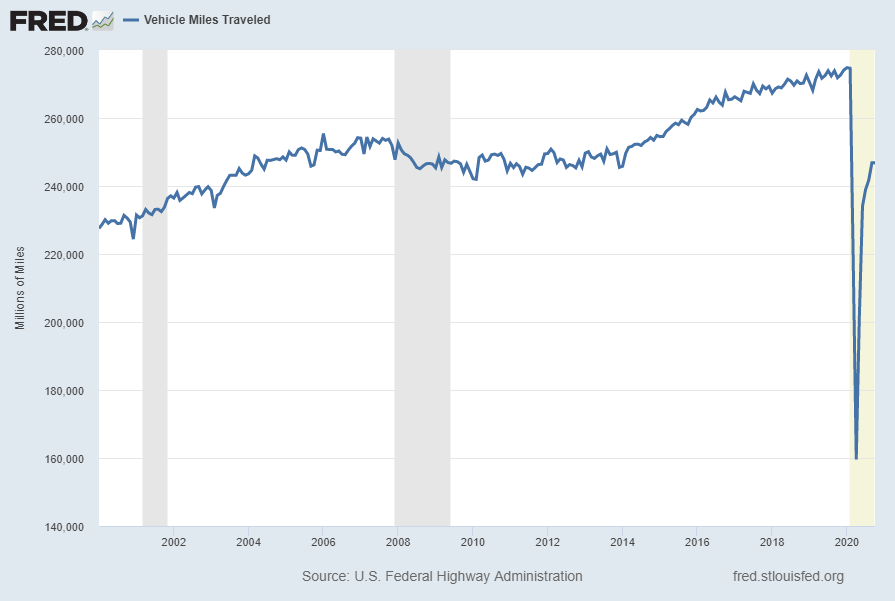
Below is this measure displayed on a “Percent Change From Year Ago” basis with value -9.2%:

source: U.S. Federal Highway Administration, Vehicle Miles Traveled [TRFVOLUSM227SFWA], retrieved from FRED, Federal Reserve Bank of St. Louis; accessed January 11, 2021: https://fred.stlouisfed.org/series/TRFVOLUSM227SFWA
__
Total Transportation Services Index (TSITTL)
“Total Transportation Services Index” (TSITTL), like other transportation measures, is exhibiting recent substantial weakness. Shown below is this measure with last value of 90.3 through September, last updated December 9, 2020:
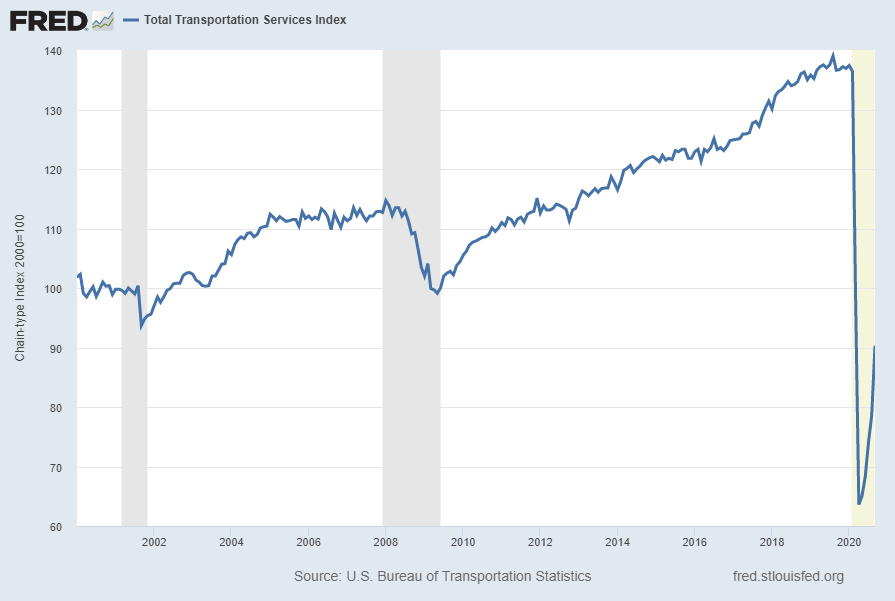
Below is this measure displayed on a “Percent Change From Year Ago” basis with value -33.9%:
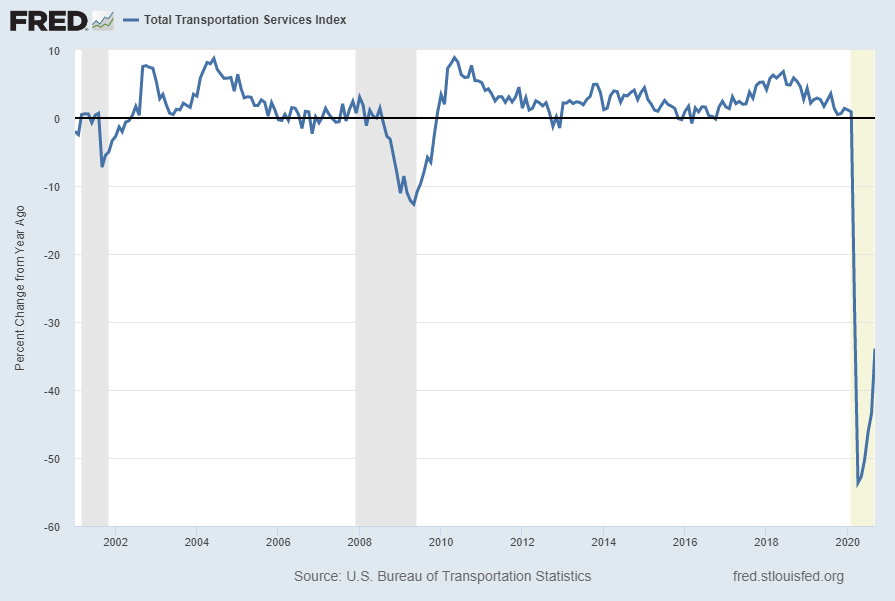
source: U.S. Bureau of Transportation Statistics, Total Transportation Services Index [TSITTL], retrieved from FRED, Federal Reserve Bank of St. Louis; accessed January 11, 2021; https://fred.stlouisfed.org/series/TSITTL
__
Industrial Production: Consumer Goods (IPCONGD)
The “Industrial Production: Consumer Goods” measure is another measure exhibiting an outsized contraction followed by a (partial) rebound. Shown below is a long-term chart of this measure (displayed from 1939), with last value of 103.9019 through November 2020, last updated December 15, 2020:
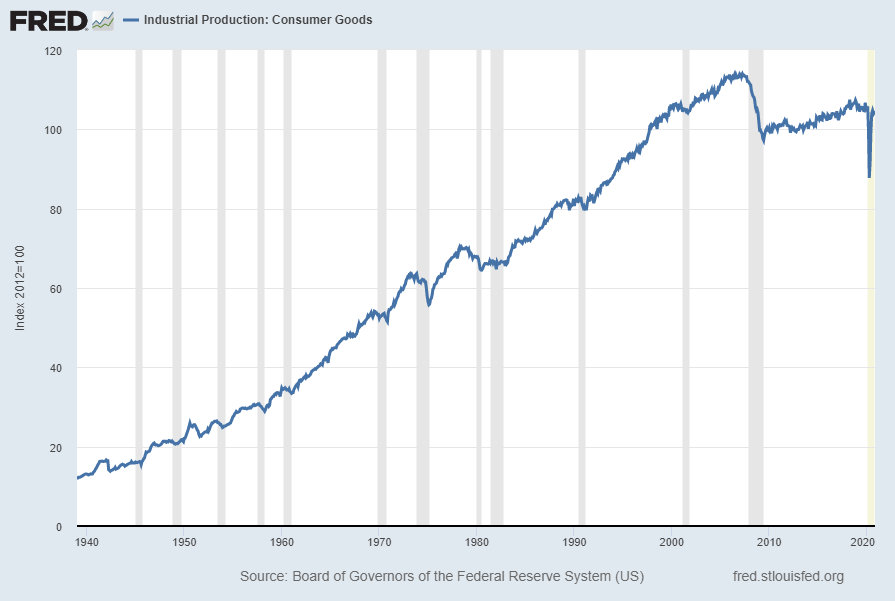
Displayed below is this same IPCONGD measure on a “Percent Change From Year Ago” basis with value -2.6%:
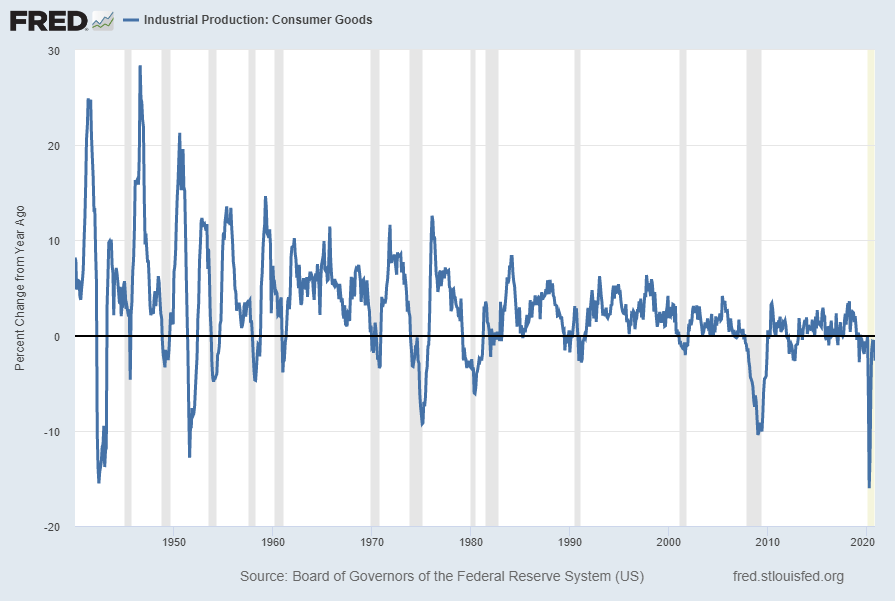
source: Board of Governors of the Federal Reserve System (US), Industrial Production: Consumer Goods [IPCONGD], retrieved from FRED, Federal Reserve Bank of St. Louis; accessed January 11, 2021: https://fred.stlouisfed.org/series/IPCONGD
__
Other Indicators
As mentioned previously, many other indicators discussed on this site indicate slow economic growth or economic contraction, if not outright (gravely) problematical economic conditions.
_____
The Special Note summarizes my overall thoughts about our economic situation
SPX at 3801.19 as this post is written
No comments:
Post a Comment